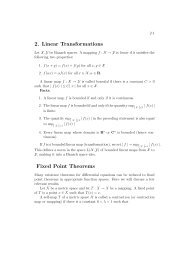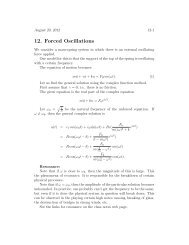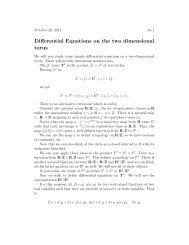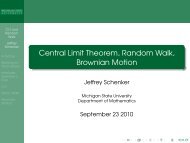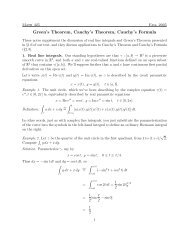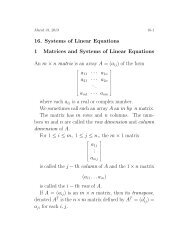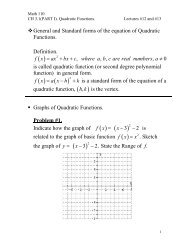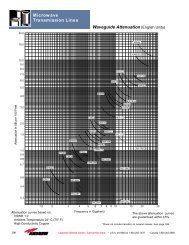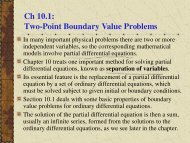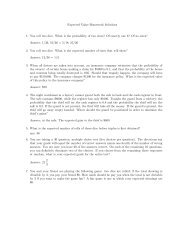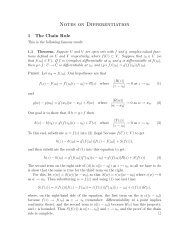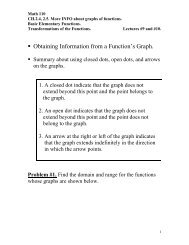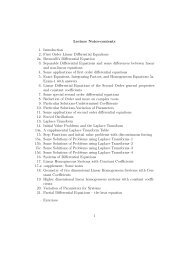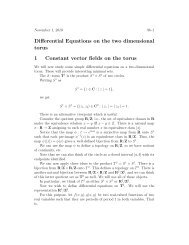16. Systems of Linear Equations 1 Matrices and Systems of Linear ...
16. Systems of Linear Equations 1 Matrices and Systems of Linear ...
16. Systems of Linear Equations 1 Matrices and Systems of Linear ...
You also want an ePaper? Increase the reach of your titles
YUMPU automatically turns print PDFs into web optimized ePapers that Google loves.
March 31, 2013 16-232. The Fundamental Theorem <strong>of</strong> Algebra is an existence theorem. It givesno information about how to find the roots <strong>of</strong> a given polynomial z(r).For degree two, one can explicitly find the roots via that quadraticformula (i.e., involving square roots <strong>of</strong> expressions involving the coefficients).For degrees three <strong>and</strong> four, there also are explicit formulas to find theroots in terms <strong>of</strong> taking expressions involving various roots <strong>of</strong> the coefficients.For degree greater than four, there are no such formulas thatwork in all cases. This surprising result (<strong>of</strong>ten called the unsolvability<strong>of</strong> the quintic) was proved by Abel in 1823. For more information lookup the Abel-Ruffini Theorem on Wikipedia.Note that some texts call the polynomial z 1 (r) = det(A − rI) the characteristicpolynomial <strong>of</strong> A. Since z 1 (r) = (−1) n z(r), these two polynomialshave the same roots, so to solve problems concerning eigenvalues, it reallydoes not matter which definition is used.Of course, even if A is real, the characteristic polynomial z(r) may havereal or complex roots. A real eigenvalue will have associated eigenvectorswhich are also real, <strong>and</strong> a complex eigenvalue will only have associated complexeigenvectors (i.e. written as u 1 + iu 2 with u 1 <strong>and</strong> u 2 both real vectors<strong>and</strong> u 2 non-zero).6.1 Simple formulas for the characteristic polynomials<strong>of</strong> 2 × 2 <strong>and</strong> 3 × 3 matricesFor any matrix A = (a ij ), define the trace <strong>of</strong> A to ben∑tr(A) = a iii=1Thus, tr(A) is simply the sum <strong>of</strong> the diagonal entries.If( )a bA = ,c dthen



